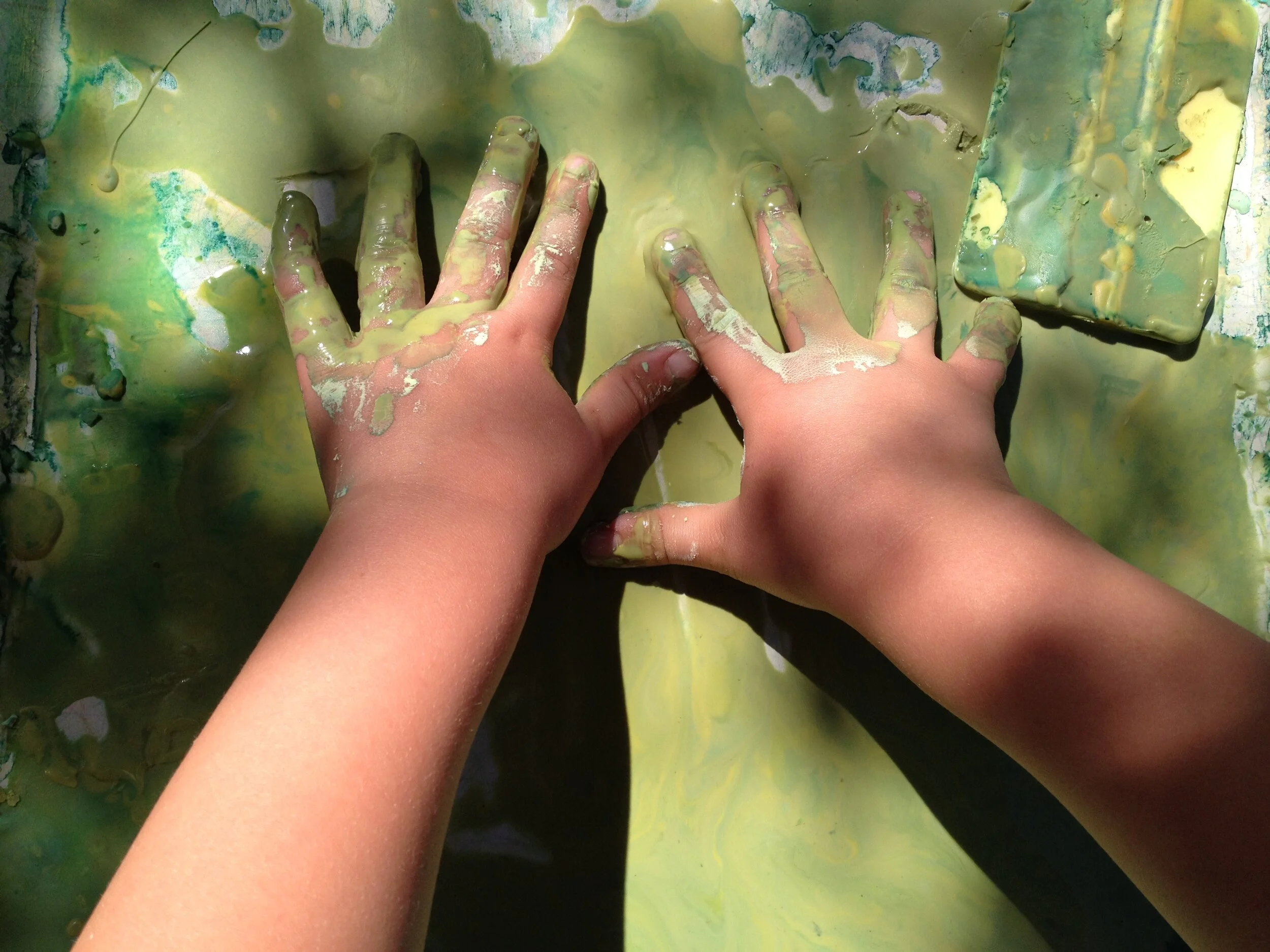
It can be difficult to see ourselves from the outside. Therapy is a process that opens up space to see ourselves from many angles, provides different ways of understanding our lives, and inspires new ways of addressing our problems.
Talking to a therapist is different than talking to a friend. Conversations between friends require a balance of give and take. The structure of therapy provides a space that is all yours—you are not responsible for taking care of the other person's needs or feelings, as is the expectation in personal relationships. In therapy, I am here to listen deeply to the nuances of what you're struggling with. As this process unfolds, we will begin to understand more about what's holding you back or getting in your way.
Adults

Some adults come to therapy to address a current life stressor such as the death of a loved one or a divorce. Other people come for problems they've struggled with for a long time, such as never finding fulfilling relationships, not knowing who they truly are or discovering that they continue to face the same difficulty over and over. In therapy, we will explore and begin to understand the complexities of who you are and how you relate to other people. It is through this understanding of yourself that growth becomes possible.
There are many ways we avoid looking at the things that are bothering us. Some examples of things that, when done in excess, can help us to avoid facing our problems include:
Spending money
Working long hours
Watching TV
Eating
Using alcohol and drugs
Therapy can help you in many ways. It can decrease anxiety and depression, improve communication and relationships, help you know who you really are and what you want out of life, heal from trauma and work through grief and loss.
EMDR

EMDR: Eye Movement Desensitization
and Reprocessing
EMDR is an innovative, therapeutic technique that uses eye movement and other forms of bilateral stimulation to process and heal traumatic and overwhelming experiences and emotional distress. EMDR involves mind, body and emotions to process disturbing memories and helps to resolve trauma and can decrease distress from the traumatic incident. There are many studies demonstrating the effectiveness of how EMDR decreases symptoms of post-traumatic stress.
Why incorporate EMDR with conventional talk therapy?
EMDR tends to process and work through trauma and overwhelming experiences more rapidly than traditional talk therapy. When an experience is overwhelming, normal processing of the experience does not occur, and it becomes frozen in time. Subsequently, when the memory is triggered, negative thoughts and feelings can occur and the person becomes overwhelmed. Many people are helped by traditional talk therapy, but the trauma is understood and worked through intellectually. Nevertheless, the trauma often continues to permeate the person's life on a gut level. Although people can intellectually process the trauma, it still feels bad. The goal of EMDR is lessen or eliminate the gut level hold or grab that these experiences have in the present.
EMDR is used to help children, adolescents and adults.
Adolescents

By its very nature, adolescence is a period of turbulence, change, and growth. Sometimes friends and family provide enough support for an adolescent to wrestle with the complexities of what it means to grow up. Sometimes this support is not enough. Because the question of identity is so strongly on the forefront, old traumas tend to resurface in the adolescent's process of sorting out the question, "Who am I?" Some examples include the death of a parent, sexual abuse, divorce and abandonment. Or, if such events occur during this phase of development, they often create a level of crisis beyond the usual struggles of adolescence.
Signs of trouble may appear in the form of:
Academic difficulties
Social isolation
Dangerous and risk-taking behaviors
Depression
Withdrawal
Talking with a neutral and open adult can be tremendously helpful for adolescents as they can begin to sort out their struggles and come to a greater understanding of who they are, what they want and what they need. Therapy can also be especially useful in this developmental stage for learning how to communicate more effectively.
Children

People are often confused about what happens in therapy with children, imagining that the child would sit down and spend the session talking to the therapist as an adult would. Understandably, this can seem strange. When working with children, I use play therapy as the primary tool for accessing the issues they are struggling with. On the other hand, the idea of children coming to "play" worries some parents who find themselves concerned that the issues are not being addressed.
Play is one of the primary ways children communicate and work things out. As the child's therapist, I listen to and observe their play and use it to inform how I understand their struggles. Direct talking is also an important element to a child's therapy, but it is woven into an atmosphere of play. The many years I have devoted to this work have taught me to deeply trust both the communication that comes through play and the healing that can occur through this medium.
An important component of child therapy is the parent/grandparent/caregiver collateral meetings. These meetings allow me to help the family with the issues that are problematic at home, school or other places and to share my understanding of the problems that the family is dealing with and how to best address them. The frequency of these meetings varies from family to family and with the phase of treatment.
When working with children, I frequently have contact with teachers and other significant people in their lives with whom contact is appropriate and helpful to the treatment.
There are different ways of structuring therapy to best meet the needs of the child and family, such as individual child sessions, sessions with both the child and parent, family meetings and parent collateral meetings. Our initial assessment of the issues and problems at hand will involve an exploration of what type of therapy will be most helpful for your family.
Couples

You may be feeling frustrated with your partner, finding yourself struggling repeatedly with issues you can't seem to resolve. Or you could be experiencing a troubling distance with your partner. Perhaps you are wondering if the two of you are ready to commit further and want to explore this issue seriously. Couples therapy can help you improve communication and gain a deeper understanding of one another, in turn creating increased trust and intimacy. Couples therapy provides an opportunity to address sensitive and often underground issues with the guidance of a neutral person.
Some examples of such issues are:
Unresolved family-of-origin struggles being triggered in the partnership
Sexual problems
Life transitions
Trauma (sexual, emotional, physical abuse)
Commitment issues
Diversity (such as ethnic, cultural or religious differences)
Parenting struggles
EMDR Consultation Group

An EMDR consultation group is forming for the second Friday of each month, from 8:30AM-9:45AM, with a maximum of 8 participants. The group will have a collaborative learning format with participants encouraged to discuss and explores one another’s cases. Additional modalities and theoretical orientations will include Flash technique and parts work. I am an EMRIA consultant in training. Fee: $75.
Linda Pazdírek
I have been practicing psychotherapy for over 20 years, and have worked with diverse groups of people with a variety of diagnoses, as well as in various schools and community clinics in the San Francisco Bay Area. In 2001 I received a Master of Science (MS) in Clinical Psychology from San Francisco State University. In 2003 I completed an intensive two-year post-graduate training program at The Psychotherapy Institute in Berkeley. I am a licensed Marriage Family Therapist (MFT #41045).
I supervise graduate-level interns who work as therapists with children at the elementary schools in the Albany School District.
Between 2010 and 2019, I led a support group for Clinical Psychology graduate students at San Francisco State University. This group was part of the required curriculum.
Other places which I have worked and consulted at include: Early Childhood Mental Health Program (Richmond), Jewish Family and Children's Services (San Francisco), The Psychotherapy Institute Community Clinic (Berkeley), San Francisco State Community Clinic, Neil Cummins Elementary School (Larkspur), and Cobb Elementary School (San Francisco). I also worked as a clinical faculty member at the Women's Therapy Center in Berkeley.
To keep abreast of changes in the field, as well as to explore and develop new clinical interests, I regularly attend courses, workshops, read clinical books and journals, and engage in professional consultation.

510.982.6332
lindapazdirek@gmail.com
902 Carmel Ave. Albany, CA 94706
